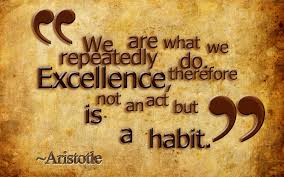 I met with an amazing upcoming client (love them), getting ready for our work together next year. Part of what they do is manage menus for cafeterias. In doing so, they want these employees to choose the healthier items. But how do you do that?
I met with an amazing upcoming client (love them), getting ready for our work together next year. Part of what they do is manage menus for cafeterias. In doing so, they want these employees to choose the healthier items. But how do you do that?
It turns out that 2 simple changes (based on the psychology of human behavior) can induce people do this — on their own, without browbeating, financial payment, or fingerwagging.
- Make Laziness work for you
The psychology of human behavior is interesting. People seem to have an unconscious need to find the path of least resistance: minimum effort to achieve their ends. The extreme end of the “bell curve of minimum effort” is to just do nothing. How many people do you know who are more comfortable doing nothing, than doing something?
This is an unfortunately large demographic.
Even so, sometimes even these folks have to go out on a limb and actually make a decision — like choosing food for lunch. And when they do, their inherent laziness can work in their favor.
How? (And what does this have to do with laziness?)
It turns out that, if you rework the menu to place the healthier choices toward the top, those will tend to get chosen more often regardless of what they are. People scan from the top down, and it’s as if they just can’t be bothered to make it ALL THE WAY to the bottom of the page. So they just give up and go with what they’ve managed to read thus far.
With your cafeteria menus, this one change can leverage laziness to improve the health of your employees.
Stealth Health
Health food needs better branding. Many people read the word ‘HEALTH’ before ‘food’ and substitute ‘TASTELESS CARDBOARD’ in their minds. Those who actually eat healthy food know this is just not true. However, perception is a stronger motivator than the data of reality.
For this reason, if you want your employees to choose the healthier items by doing the obvious – labeling them as such – those foods are far less likely to get chosen. It’s a very Shakespearean irony that your very efforts to achieve a certain end is what makes that end less likely to be achieved.
A similar phenomenon happens in our vending machines. If you create a vending machine with all healthy choices, the vendors get really grumpy because nothing gets purchased!
The solution is to be a bit sneaky … like hiding raisins in your kids’ oatmeal to get them to eat something (anything!) healthy. Likewise, my client found that if you rename the healthy items to something with a little glitter on it, they’ll choose them.
These “stealth health” strategies work for children, spouses, and apparently for employees as well.
For example, labeling healthy choices as ‘ethnic’ creates more of an “oh la la” reaction, than calling it a heart healthy plate full of veggies. Regional cuisines produce the same effect. Label a plate of baked fish, green beans, and cous cous as a low fat option, and you’re only going to sell a few of those. But re-label it as Mediterranean and suddenly you have their attention.
The Logic of Illogic
We can bemoan the fact that we have to trick people into making healthy food choices (or pay people to get their screenings done!), but welcome to Earth. This is the landscape of human behavior we have to navigate. Understanding the topography of their decisions is critical if we are going to create the conditions that favor their success.
We cannot assume that people make decisions based on logic alone (or at all, sometimes it seems). Also, we cannot assume that the quirky nature of human preferences aren’t driving most of their decisions. Given these two assumptions, we should logically expect illogic on their part, and respond accordingly.

